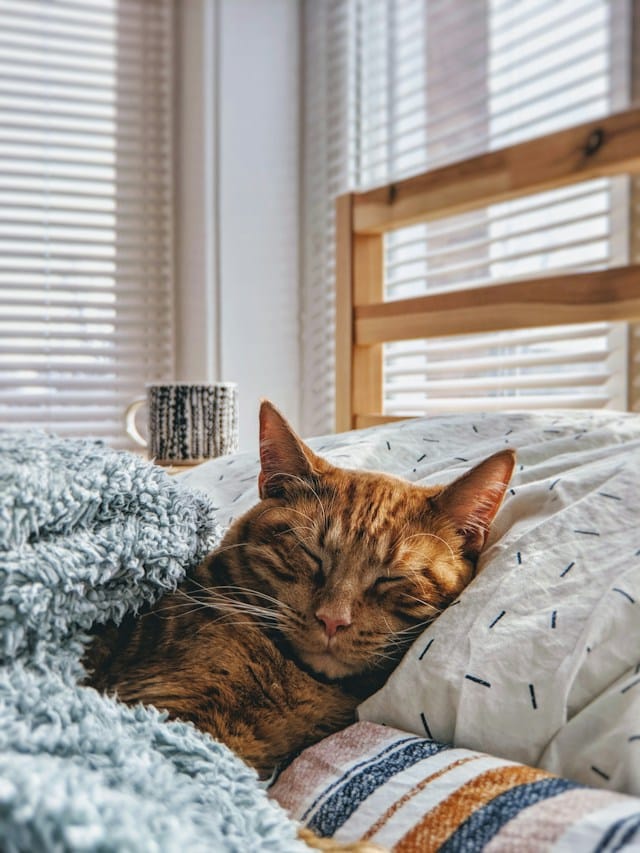Cats are often portrayed as independent and aloof creatures. However, just like their canine counterparts, cats can and do suffer from anxiety, especially when they are separated from their beloved owners. Separation anxiety in cats can be a challenging condition to identify and manage, but with a well-informed, considerate approach, it is certainly feasible. This article will provide you with a comprehensive understanding of this condition and give you some practical advice on how to help your feline friends cope better when you are away.
Identifying Separation Anxiety in Cats
Before you can begin to address separation anxiety in cats, you first need to recognize its existence. Unlike dogs, cats are masters at hiding their feelings, so determining whether they are experiencing anxiety can be tricky.
Cela peut vous intéresser : How to Safely Introduce Your Dog to Water-Based Activities?
Cats with separation anxiety may exhibit a variety of behaviors. Some common signs include excessive vocalization, inappropriate elimination outside the litter box, excessive grooming leading to skin lesions, and destructive behavior. Less obvious signs can include changes in eating patterns, like decreased appetite or overeating, and alterations in sleep patterns.
Remember, many of these signs can also be indicative of medical problems, so it’s essential to consult with a vet if you notice any changes in your cat’s behavior or physical condition.
Cela peut vous intéresser : How to Effectively House Train an Older Rescue Dog?
Treating the Cause of Anxiety
Anxiety in cats can stem from various causes. It could be a change in routine or environment, the loss of a companion pet, or the introduction of a new pet or family member.
If the cause of your cat’s anxiety is a change in routine, try to establish a consistent daily schedule. Feed and play with your cat at the same times every day. This predictability can be very reassuring for cats.
If a new pet or family member is causing the anxiety, gradual introductions and positive reinforcement can help ease the tension. Remember, cats are territorial animals and may feel threatened by a new presence in their space.
Medical and Behavioral Interventions
Sometimes, even after addressing the root cause, the symptoms of anxiety may persist. In such cases, it may be necessary to consider medical or behavioral interventions.
Medication may be an option for cases of severe anxiety. However, it should be used as a last resort and under the strict guidance of a veterinary professional. The goal of medication is not to sedate your cat, but to alleviate the overwhelming anxiety they feel when you are gone.
Behavioral interventions can include enrichment activities, using comfort items such as a blanket with your scent on it, or employing techniques like clicker training.
Focus on Enrichment Activities
Cats are independent creatures. They love to explore, hunt, and play. Providing your cat with enrichment activities can distract them from their anxiety and give them something to focus on when you are not around.
You can create a stimulating environment for your cat by providing a variety of toys, hiding treats around the house for them to find, or installing a bird feeder outside a window for them to watch. You can also consider getting an interactive feeder or puzzle toy that requires your cat to work a bit for their food, mimicking the hunting process.
Professional Help
If you’ve tried everything and your cat’s anxiety symptoms persist, it might be time to seek professional help. A veterinary behaviorist is a vet who specializes in animal behavior. They can provide a thorough assessment of your cat’s behavior, help identify triggers, and come up with a customized treatment plan.
In the end, the most essential element in treating separation anxiety in cats is patience. It can take time for your cat to adjust to changes and for treatment strategies to take effect. Always remember, your cat’s well-being is a testament to the bond you share with them. They miss you as much as you miss them, and it’s up to you to help them cope with your absence in the healthiest way possible.
Utilizing Puzzle Feeders and Comfort Objects
To help manage symptoms of separation anxiety in cats, you can implement several home strategies. Puzzle feeders are an effective tool to keep your furry friend occupied. This type of feeding device is designed to challenge your cat, engaging their instincts to play and hunt. It keeps them busy for extended periods, thus reducing their anxiety and their awareness of your absence.
Besides, you can use comfort objects like your worn clothes. The scent of a familiar person can be very comforting to cats. Leaving a blanket or a piece of clothing that smells like you can help reduce your cat’s stress when you’re not home. The strong connection between cats and scent can significantly help in managing separation anxiety.
Consider leaving the TV or radio on at a low volume. The soft sounds can provide a sense of company, which can be calming for your pet. Similarly, some pet parents have found success using pet cameras that allow them to interact with their cats remotely.
Remember, all cats are different, and what works for one may not work for another. It’s all about observing your cat and understanding their unique needs and preferences.
Behavior Modification Techniques
Behavior modification, also known as behavior therapy, is often an effective method for dealing with cat separation anxiety. This method involves adjusting your cat’s behavior through reinforcement of positive behaviors and ignoring or redirecting negative ones.
For instance, if your cat gets anxious whenever they see you getting ready to leave the house, try to change the association with that action. You could spend a few minutes each day going through your leaving routine (putting on shoes, picking up keys, etc.), then sitting back down instead of leaving. Over time, your cat may start to understand that these actions do not always mean you are leaving.
You can also try clicker training, a type of positive reinforcement. When your cat behaves in a way you’d like to encourage, you click the clicker and give them a treat. This method can be very effective in reducing the symptoms of separation anxiety.
Remember, patience is key. It can take time for these techniques to show results. But with consistent training and a lot of love, you can help your cat overcome their anxiety.
Conclusion
Dealing with separation anxiety in cats can be a journey filled with challenges and small victories. It’s crucial to remember that your fur friend’s behaviors are not a personal rebellion against you, but signs of distress. With patience, understanding, and the right approach, it is possible to manage and eventually overcome this condition.
The process begins by recognizing the signs of separation anxiety and understanding its potential triggers. Then, it involves taking proactive steps to treat the anxiety, whether that’s through creating a consistent routine, introducing behavioral changes, or providing a stimulating environment. If needed, professional help is also available.
Remember, your reassurance and consistent presence (even if not physically) greatly contribute to your cat’s sense of security. They love and miss you when you’re gone. Your commitment to helping them navigate through their separation anxiety is a testament to the deep bond you share. Keep giving them the love and support they need, and with time, your cat will learn to cope with your absences in a healthier way.






